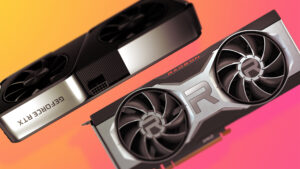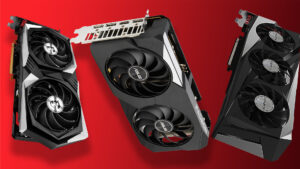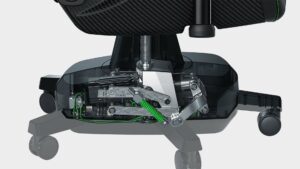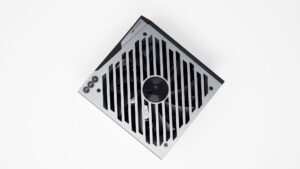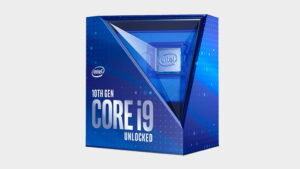The best gaming headset has to mix outstanding audio, the comfort to last a proper gaming session, and great connectivity, too. While we're talking about gaming headsets, we don't just game on our PCs so they also need to be versatile enough to sound great when you're slashing your way through Elden Ring, listening music, or watching movies on your machine.
We've tested the best gaming headsets on the market and these are our picks for the top audio, but also for ones that won't break the bank either. Of course the most important factor is sound quality. Where would any gaming headset be without quality drivers? Gaming headsets have a longstanding tradition of over-doing the low frequencies, or in other words, turning the bass up to 11. That's not something we're particularly fond of, especially when it's done poorly or at the expense of all other definition. We prefer more balanced drivers or those that keep their tweaking to a refined minimum.
Some of the headsets in this guide excel at just one thing—a big reason we like the Kraken X at its price—while others offer a great balance between everything we value. Our top pick, the Razer Blackshark V2, is a sturdy, $100 headset with great sound quality. Alternatively, if you want to go wireless and have the money to spare, we also recommend the HyperX Cloud Alpha Wireless.
For only the best wireless picks, check out our guide to the best wireless gaming headsets. That's where you'll find a more expansive line-up of cable-free cans. For now, though, onward with the best gaming headset recommendations from your neighbourhood PC Gamer editors.
Best gaming headset
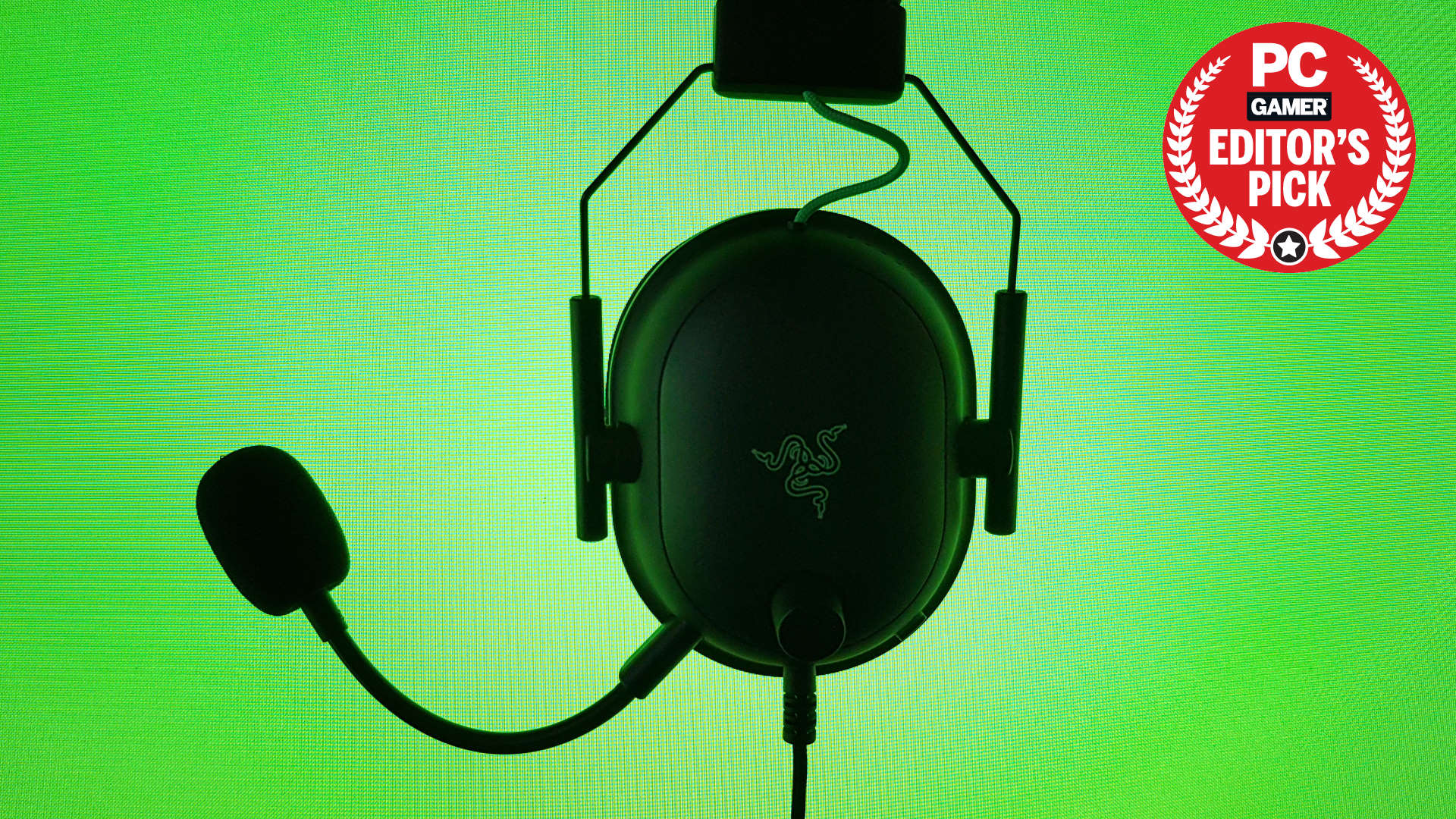
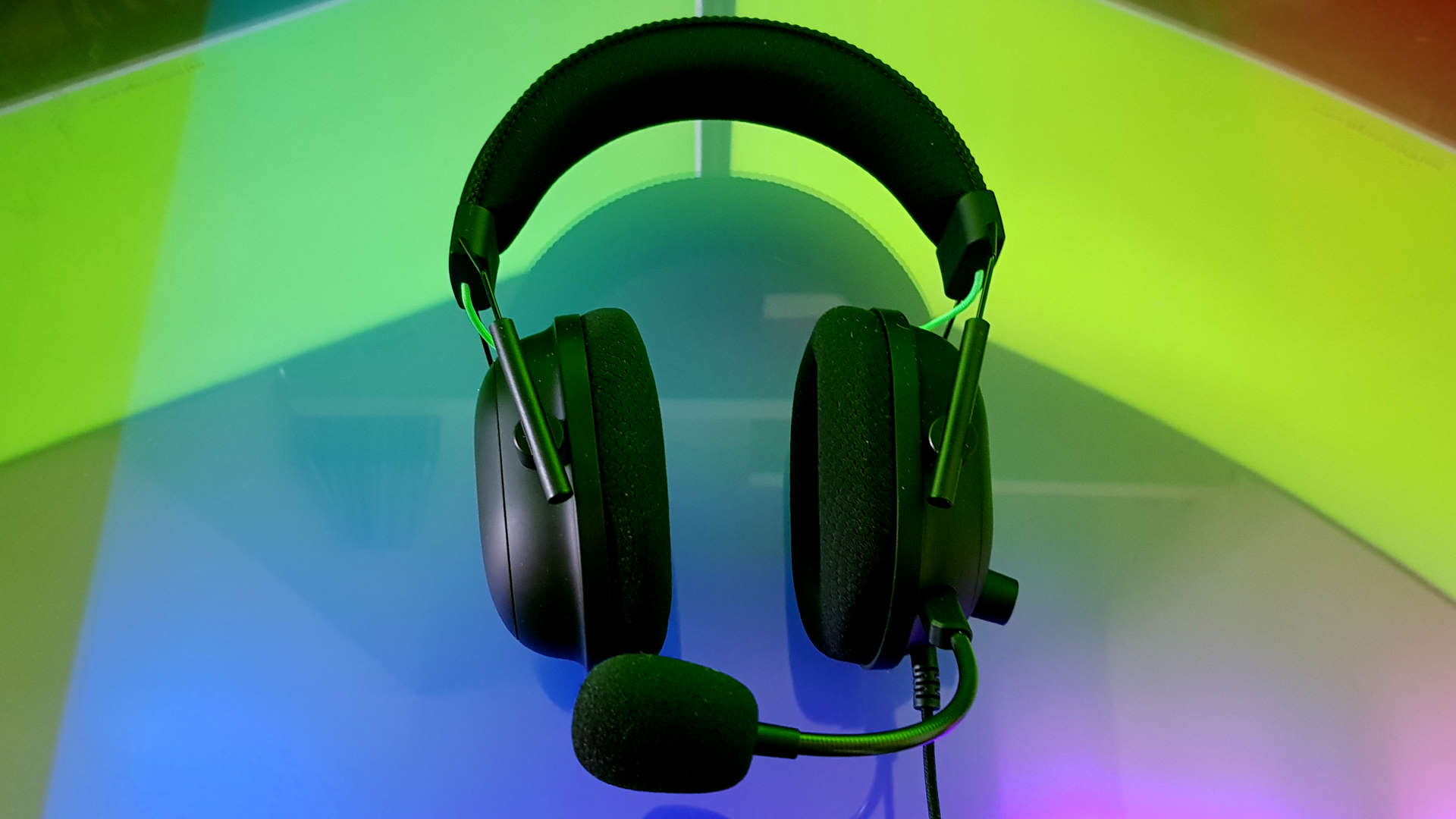
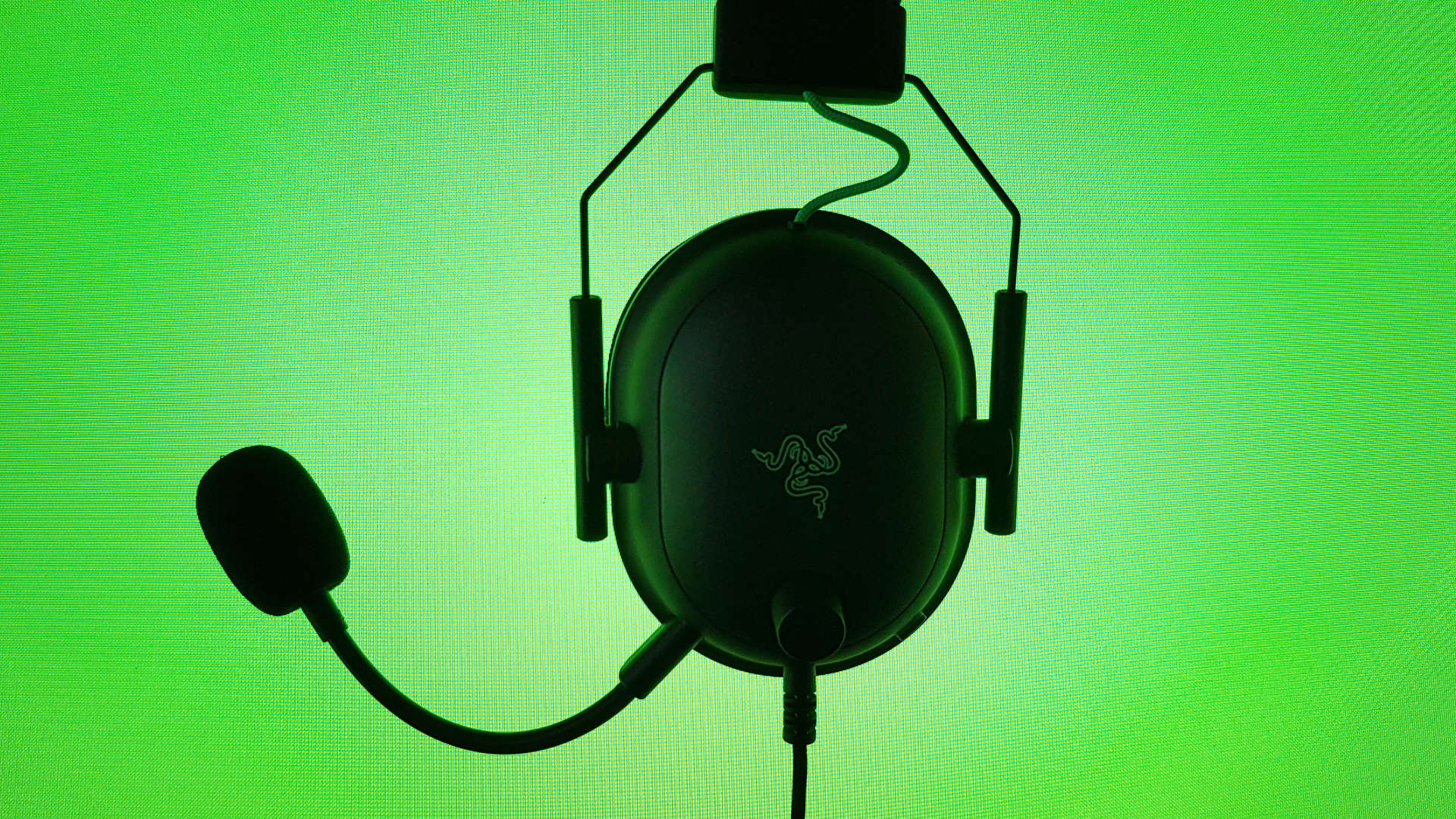
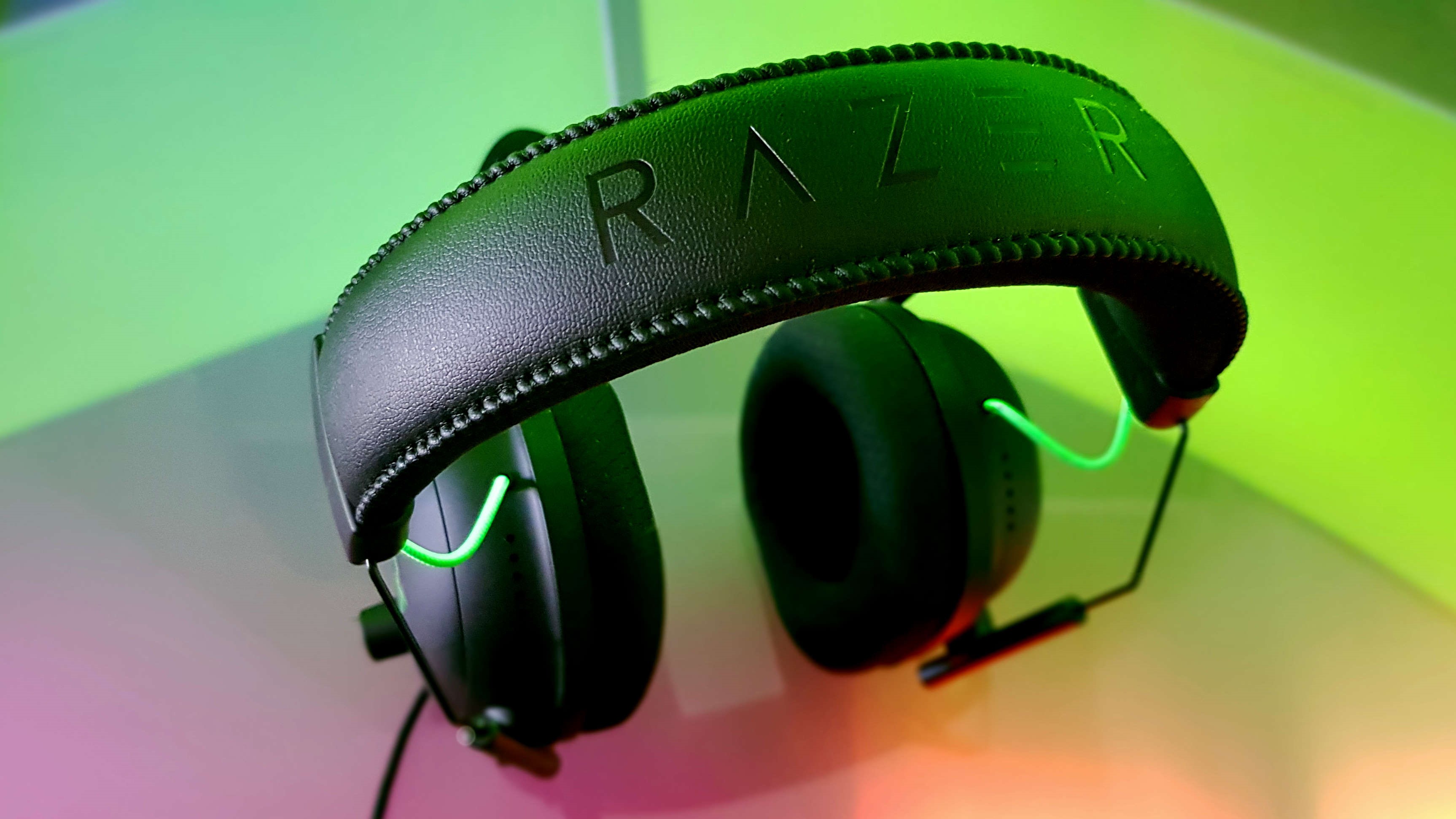
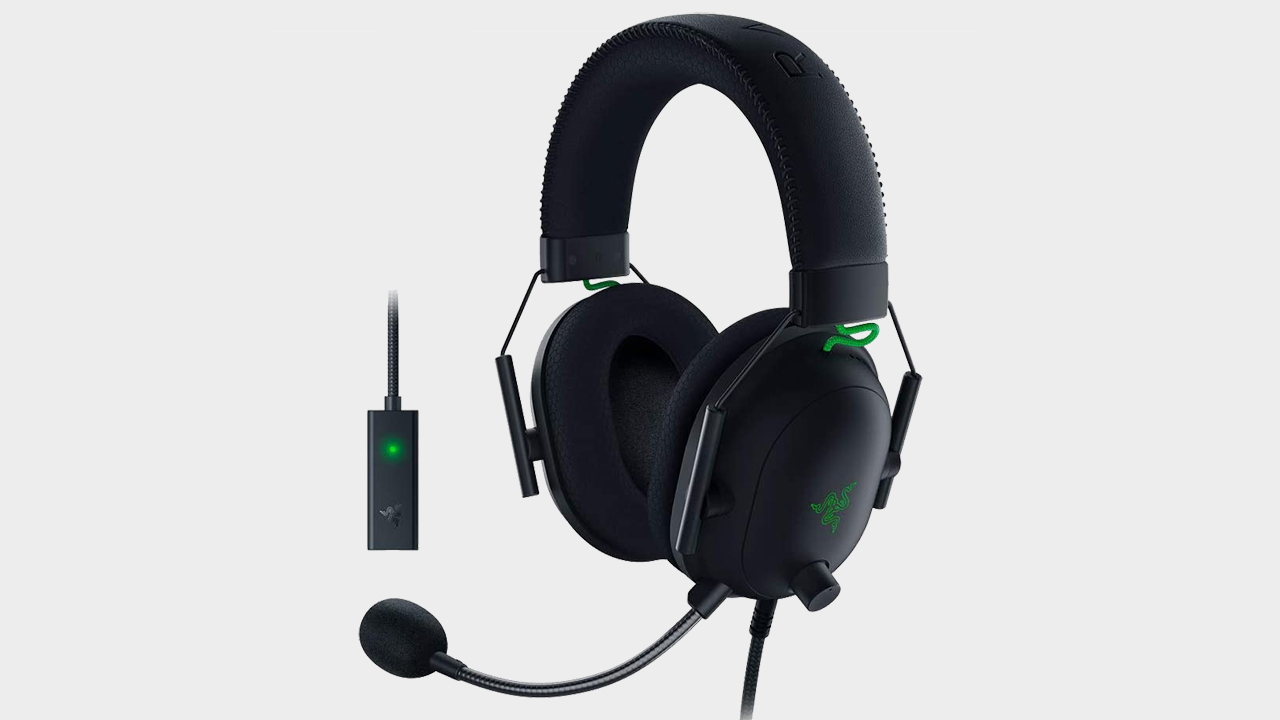
Dethroning the HyperX Cloud Alpha from the top spot was no easy feat. Razer's BlackShark V2 gaming headset manages to do just that by offering killer audio quality, great price, and easy-to-use software. From the moment it first started talking about the BlackShark V2, it was clear this was main focus of the headset, and the design of the drivers themselves are effectively doing what the impressive Cloud Alphas do.
The 50mm TriForce Titanium drivers are designed with discrete ports to separate bass, mid, tremble tones from interfering with each other. The result is a richer sound than a standard set, and keeps it on par with HyperX's 50mm dual-chamber neodymium driver headset. They're like a tribute to HyperX's own design, and no worse for it.
For me, the sound is one of the stand-out features of the BlackShark V2, and is far and above what you will get with most other sets in this price point. I'm also a big fan of the restrained design of the headset, and I've found them to comfortable enough to wear for marathon gaming sessions.
There's only one reason I no longer use them as my daily drivers, and that's the arrival of the wireless version, the rather more expensive BlackShark V2 Pro. They use the same drivers, but use a lag-free wireless connection, with a great battery life… but they are pricey. Though it has to be said that we've seen deals as low as $130 so it is worth looking at.
But overall price is the other stand-out feature of the wired BlackShark V2 headset; you'll often find them for under $100 and that makes them an absolute bargain.
Read our full Razer Blackshark V2 review.
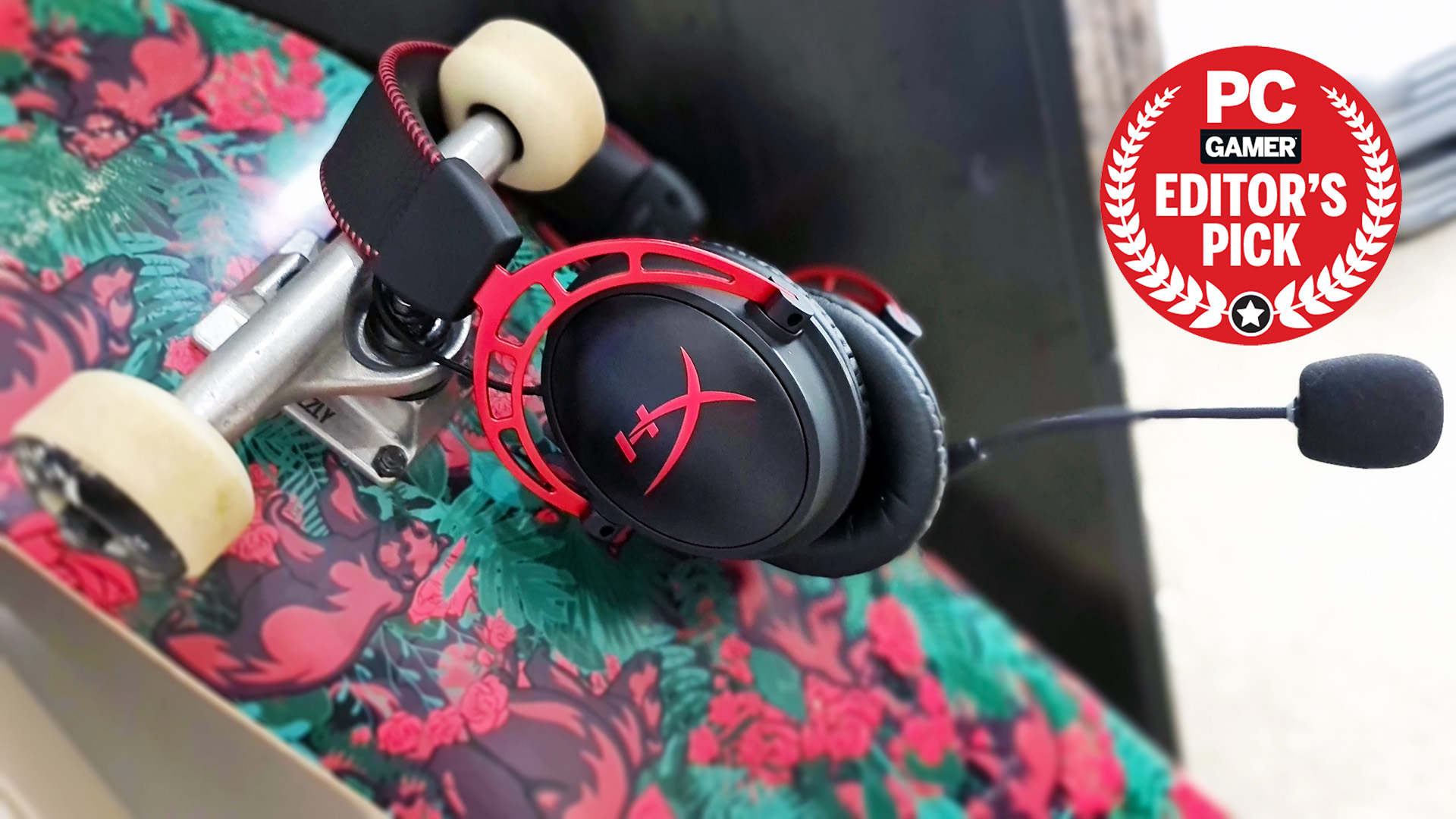
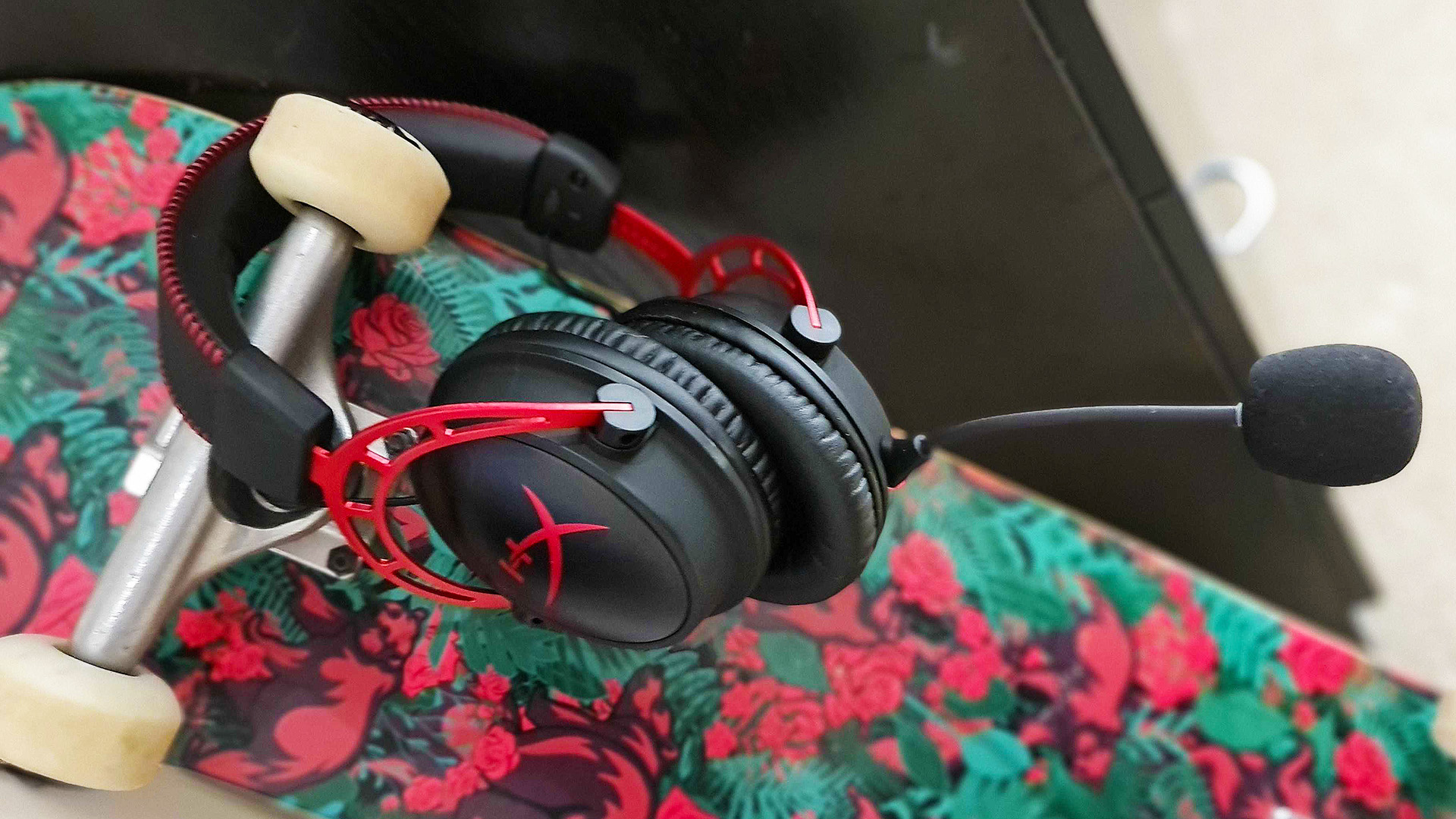
The HyperX Cloud Alpha is perhaps the most praised thing to exist on this site. We all love it on team and now HyperX has cut the cord on its best pair of cans. The biggest drawcard for this headset is the new huge battery. This is offering up to 300 hour battery life while in wireless mode while still keeping the headset relatively light and comfortable. It's a pretty massive feat and I feel HyperX has pulled it off.
Out of the box this unit was reporting having about 80% charge, so I decided to leave it there to see how well that held. I spent a work day listening to music and checked the battery again: I swear it still said 80%. I have been using this thing for gaming and music listening pretty consistently for the past week and we aren't even at 50% battery yet.
That impressive battery life is of course, a best case scenario. A lot of that has to do with the volume you're running the headset at, and volume is probably my only real complaint. It's absolutely loud enough but I can listen to it at full volume and still be fairly comfortable.
But the sound quality truly is incredible. Music sounds amazing. It's always fun to listen to some of my favourite sound heavy songs on a good pair of cans and try to pick the different instruments or bites used. These do an excellent job, and are definitely one of the better gaming headsets I've used to listen to music on. When playing games the directional sound is also very nice. I was able to easily locate hidden batteries by directional beeps in Deep Rock Galactic, and had a wonderful time bouncing along to the tight beats of Shadow Warrior 3. I loaded up some Doom Eternal and promptly terrified myself. If you've ever wanted to know what it sounds like having a Cacodemon suddenly show up and whisper sweet blah-things into very specifically your left ear then these can absolutely deliver.
The Cloud line is always touted for comfort and despite the hefty battery this still definitely fits the bill. I'm someone who struggles with too much weight or tightness on my head, and I have a real sensitivity to uncomfortable headsets. The top band is thick and has soft padding underneath. This coupled with the equally soft ear cups makes for a very cozy experience, and does an excellent job of blocking out noise.
Sadly, the mic is your fairly standard affair and while it will work just fine for chat in games, it's very basic and uninspired when it comes to sound quality.
Though all things considered, I struggle to imagine a customer who wouldn't be happy with these as a wireless gaming headset. They're pricey, but within reason for their specs, and they certainly deliver on everything you could want for gaming, and listening to music, on your PC.
Read our full HyperX Cloud Alpha Wireless review.
Best gaming keyboard | Best gaming mouse | Best gaming chair
Best VR headset | Best wireless gaming mouse | Best graphics cards
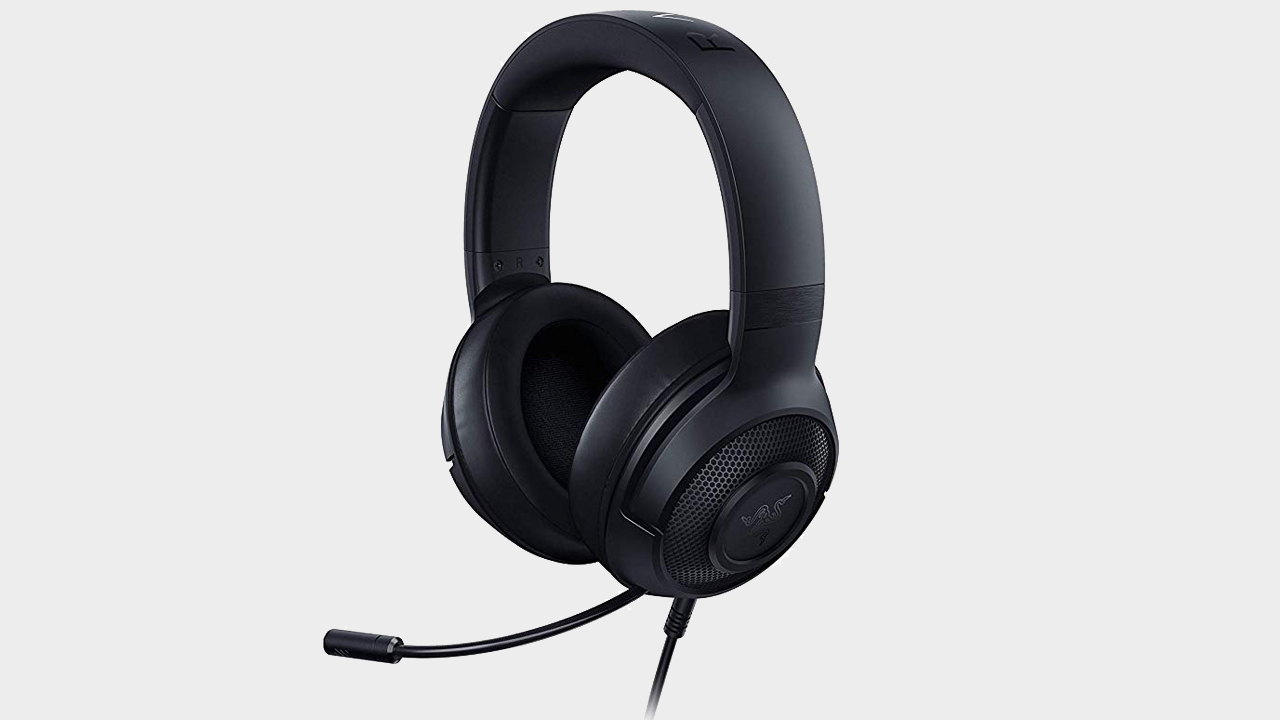
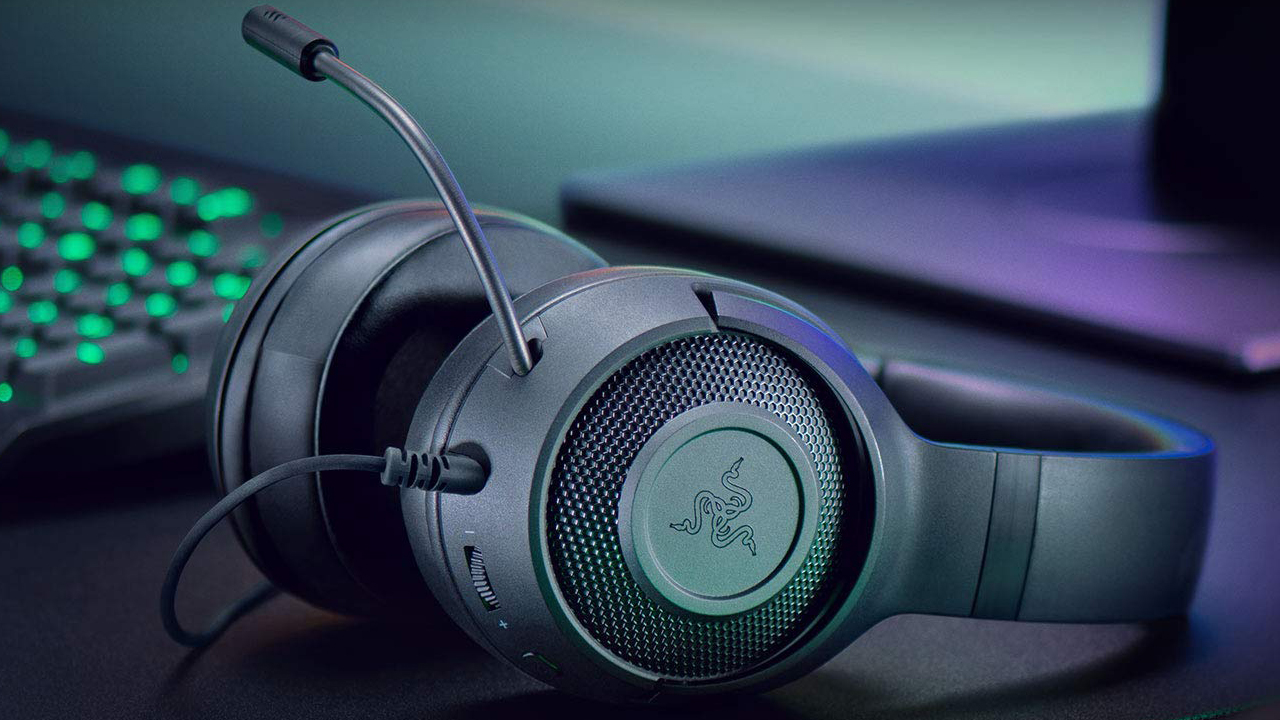
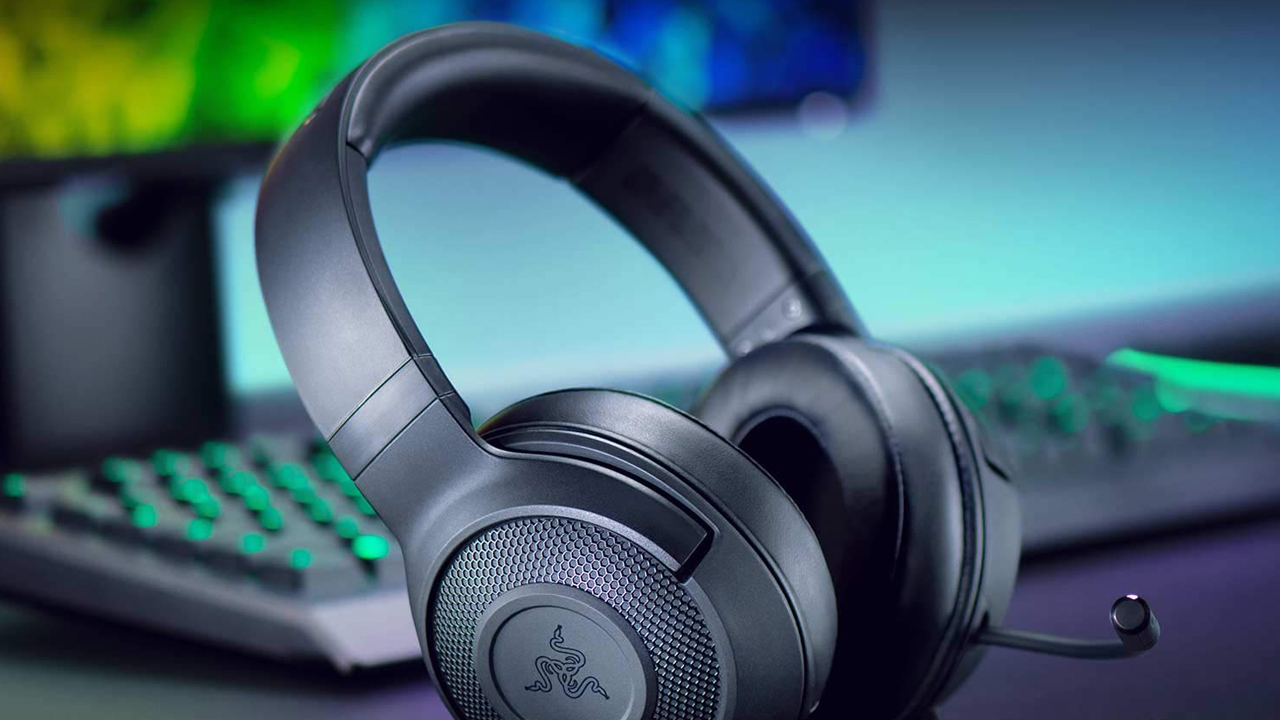
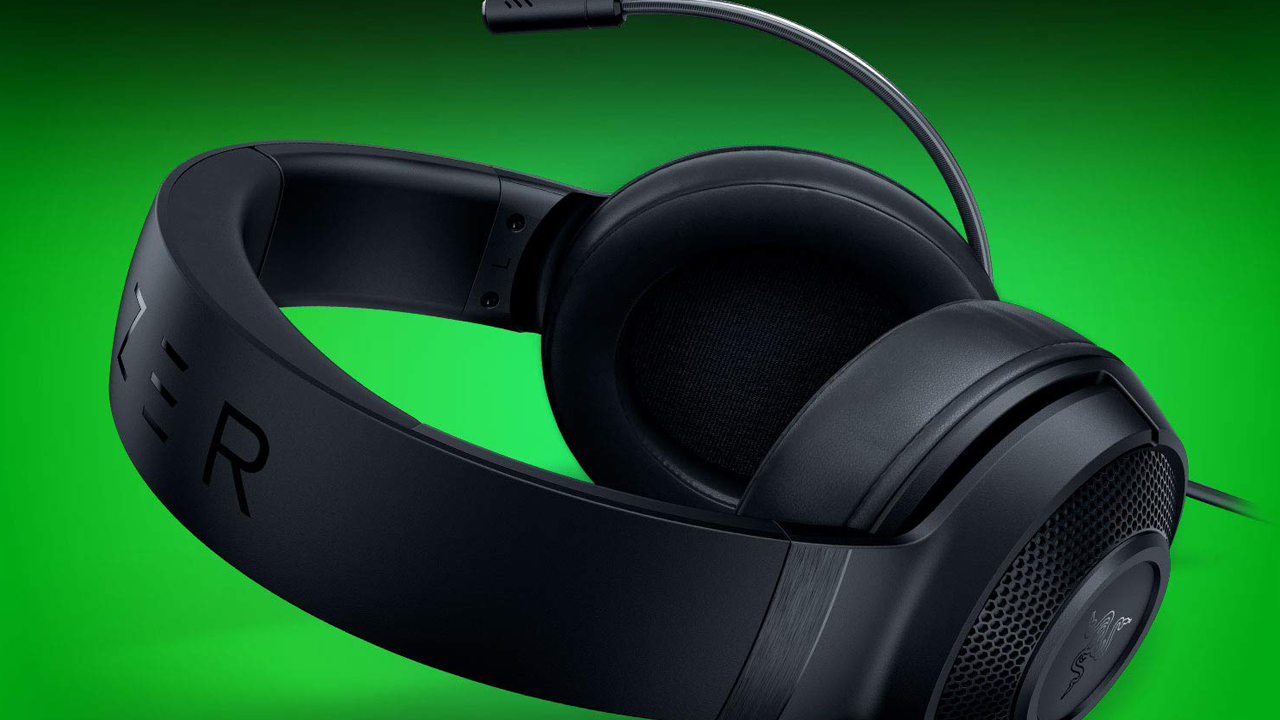
As a cheap alternative to the tricked-out Razer Kraken, the Kraken X is a budget-friendly option that excels on PC for one simple reason—virtual 7.1 surround sound. Available via an app, this elevates the headset's already good audio thanks to superior depth, clarity, and definition. It also makes going back to the X's standard audio mode difficult.
In our testing it's clear the Kraken X isn't going to be able to stand toe-to-toe with the best of HyperX's Cloud range, or even with its fellow Razer stablemates, but for the money, the Kraken X delivers the goods.
When you throw in enviable comfort and a lightweight, stylish and understated design, this version of the Kraken offers tremendous value for money. There are niggles to dampen the party, of course (a non-detachable mic being chief among them), but you can't complain when you're getting good 7.1 sound for such a low cost.
When you've only got $50 to spend on a gaming headset, we don't think you'll do much better than these Razer cans.
Read our full Razer Kraken X review.
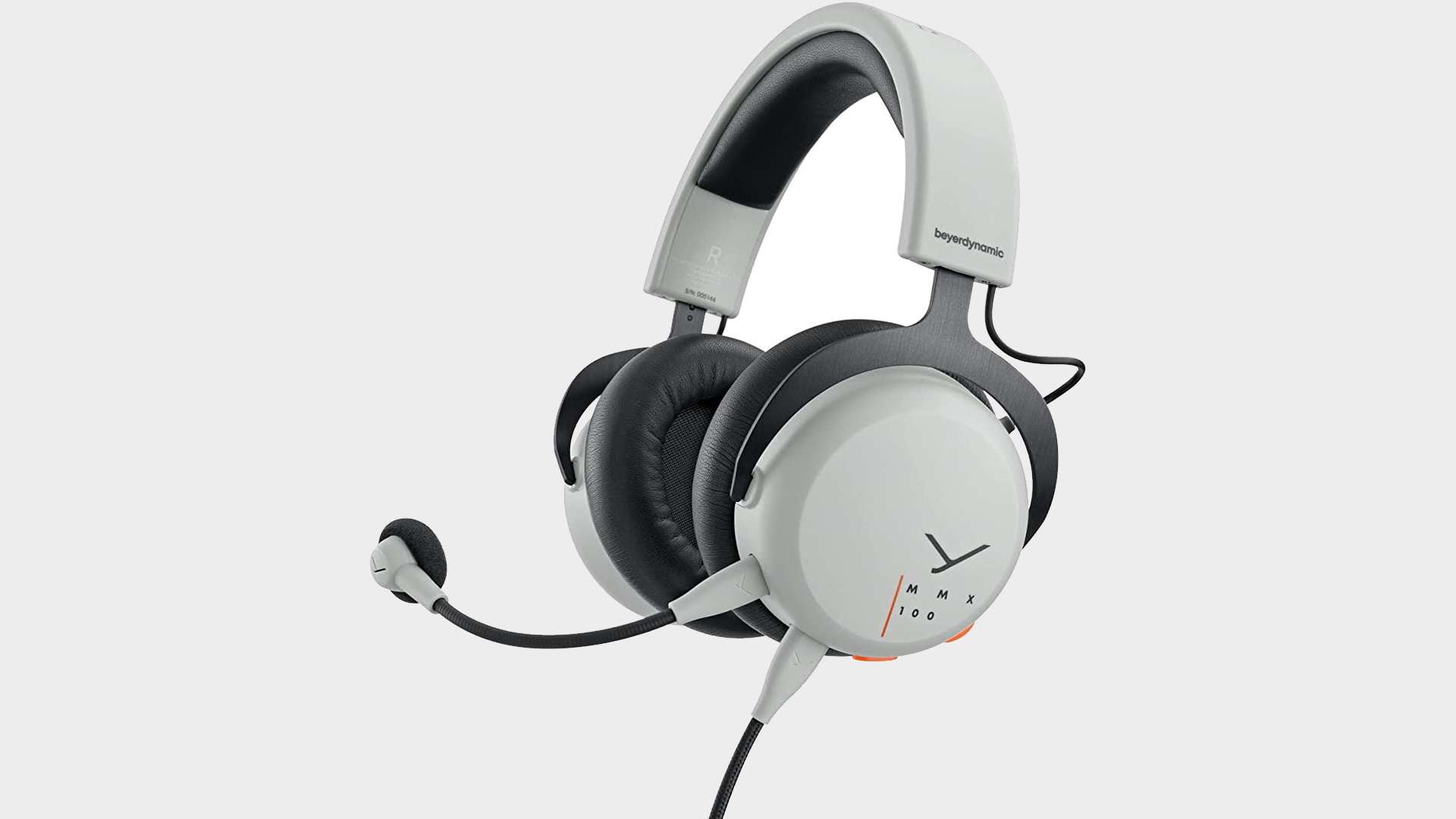
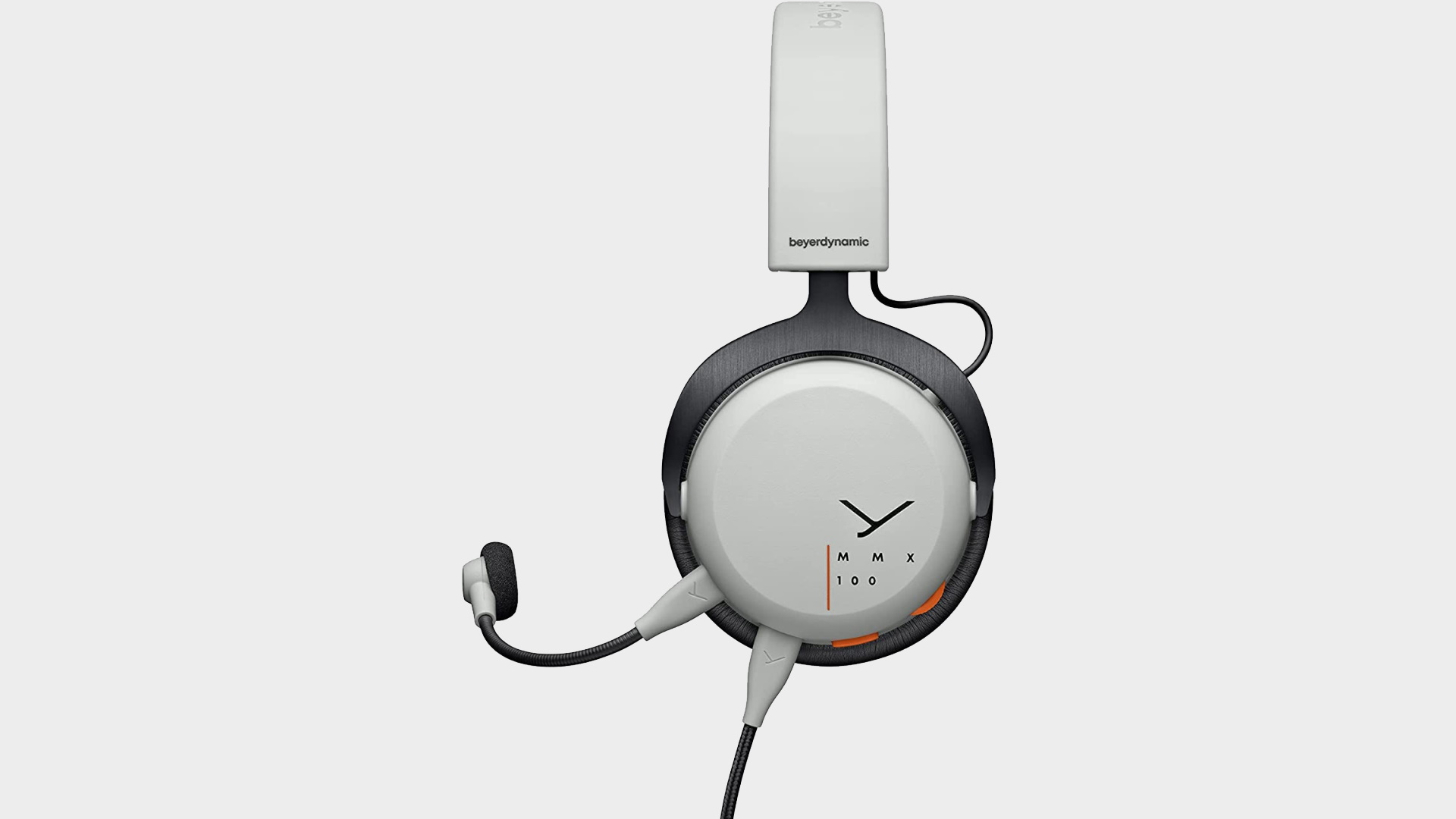
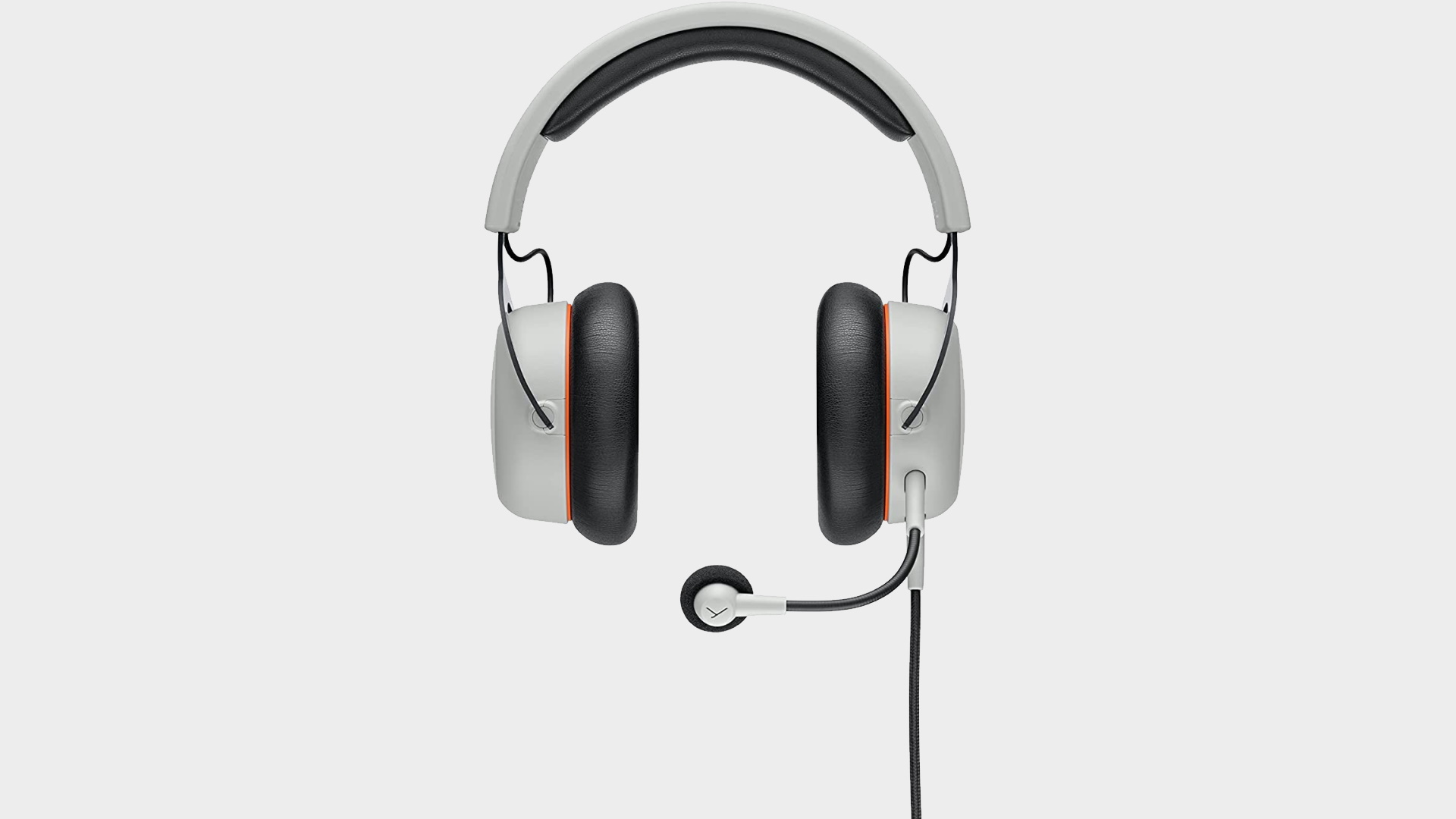
This isn't the first gaming headset from Beyerdynamic but the MMX 100 is absolutely its most rounded offering so far. Offering excellent audio and a good microphone in a comfortable and well-designed headset makes for an easy entry into our best headset list, especially when you can pick these impressively made cans up for under $100.
Despite using a closed-back design we've found the MMX 100s produce a surprisingly wide sound stage, without any of the muddiness or over-eager bass that often plagues gaming headsets. The bass is so finely tuned without any distortion or boominess that you typically get on most gaming headsets. The mids and highs are crystal sharp bringing out all the tiny details and audio cues like footsteps or reloads.
Add in the fact that Beyerdynamics has gone for lightweight materials, with plush memory foam on the earcups and headband makes them supremely comfortable for long sessions too.
The overall build is quite exceptional except for one really annoying issue—the volume dial. On my unit, it had quite a bit of play where it could rock back or forth without changing the volume while causing static in the right ear cup when adjusting volume and oftentimes, completely cutting out the audio on the right side. This is mostly around the max volume position. Minute adjustments of volume would fix the audio but it's most disturbing for such a well-built headset that I'm honestly inclined to believe it was just my particular sample and not systemic.
There’s simply no denying that Beyerdynamic has totally knocked it out of the park with the MMX 100. At $99, it’s an incredible bargain and I’d be hard-pressed to point out a more comfortable, better sounding one than this. The Steelseries Arctis Prime(opens in new tab) comes close in comfort but not for sound. Putting aside the volume dial issue on my particular unit, this is easily one of the best gaming headsets money can buy right now.
Read our full Beyerdynamics MMX 100 review.
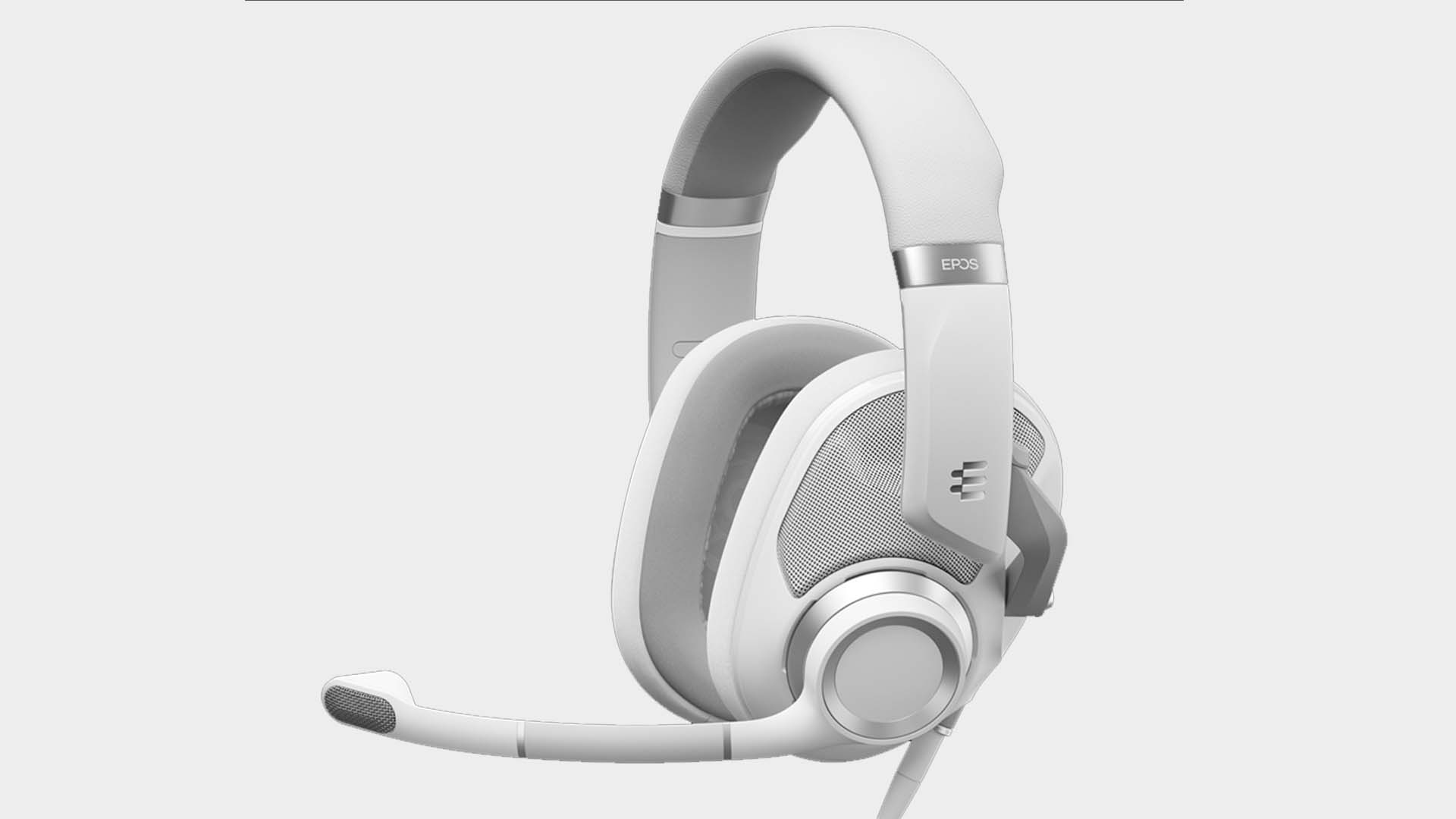
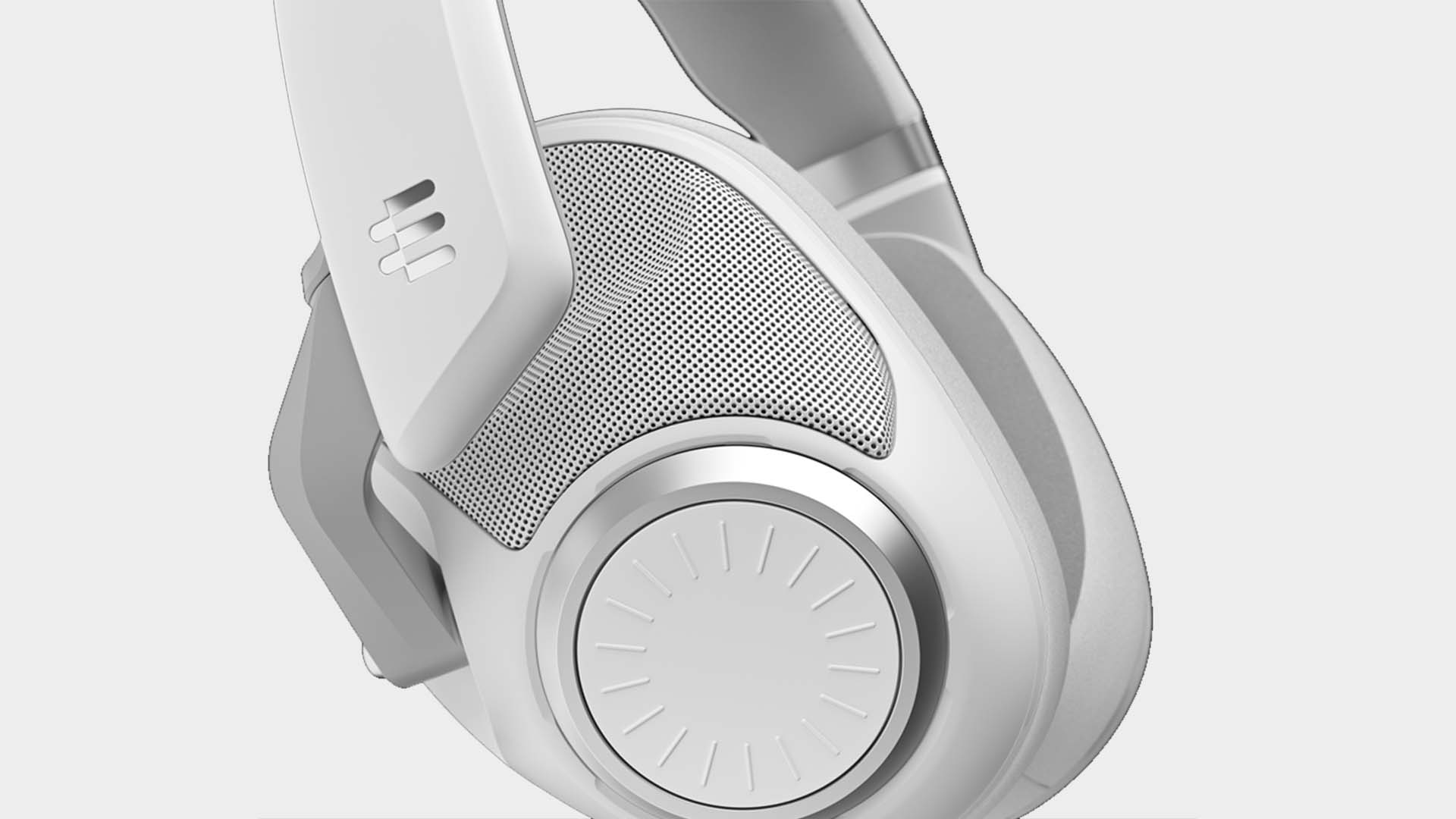
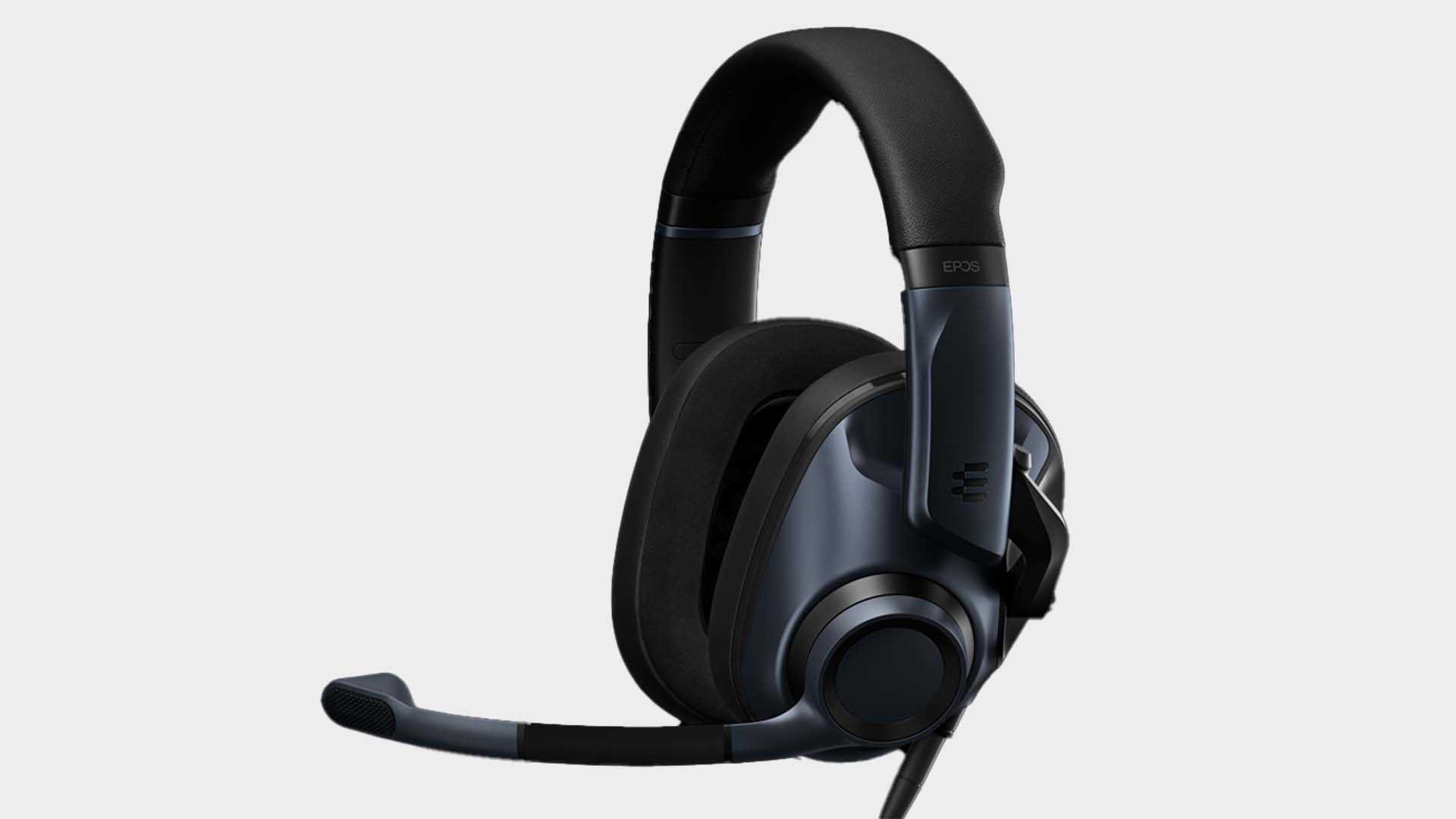
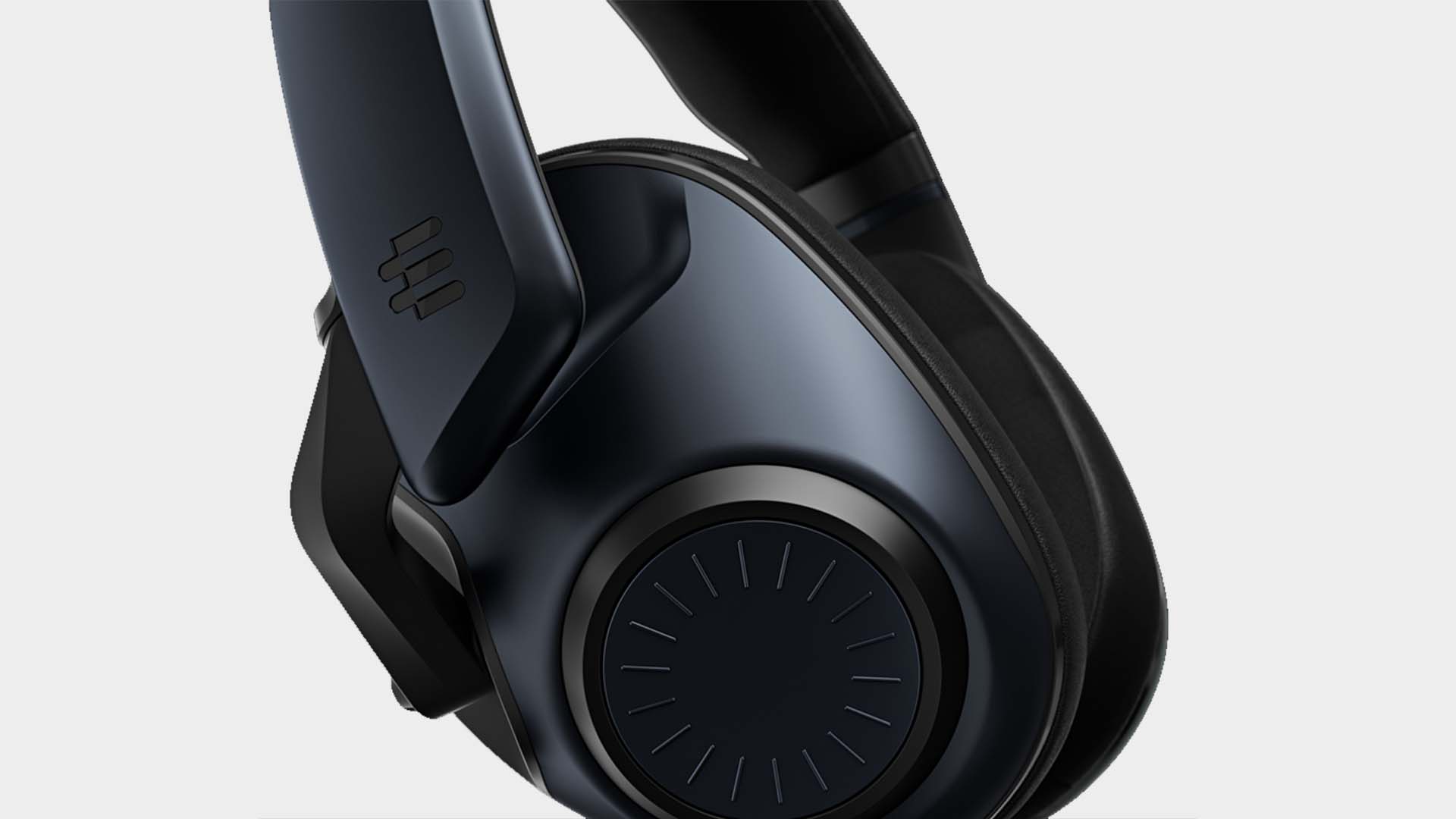
Epos is gradually shifting away from its Sennheiser past and beginning to collect its own lineup of great gaming headsets. The H6PRO is a big part of that, as the company's first go at a true flagship product without Sennheiser's stamp all over it.
The H6PRO offers a really high-grade headset experience. There are fancy new 42mm drivers to keep them sounding great, which have been tune to offer a more balanced and easy on the bass profile than your usual gaming headset. It also offers a great sounding microphone that delivers the benefits of both flip-to-mute and removeable designs.
The H6PRO is available as either open-back or closed-back. The difference will have an impact on the noise isolation, audio response, and how the headset feels on your head. So you could say it's a pretty big decision, as far as gaming headset features go.
I've had experience with both open-back and closed-back designs and, essentially, if you desire noise isolation (blocking outside noise from reaching your ear holes) you'll want the closed-back H6PRO headset. If that's not important then it's the open-back H6PRO headset that will be the better choice for a superior gaming sound stage.
In terms of a new flagship, Epos has put together something really competitive and impressive in the H6PRO. The downside is that these also come with a flagship price tag of $179 (£149, €179) and one that you really need to debate whether you are happy with a wire or might instead consider going wireless—if there's one peripheral that's worth cutting the cord with, it's your headset.
That said, should you be happy to spend that amount of cash, you can be safe in the knowledge that the Epos H6PRO is built to a standard worthy of that price tag.
Read our full Epos H6PRO review.
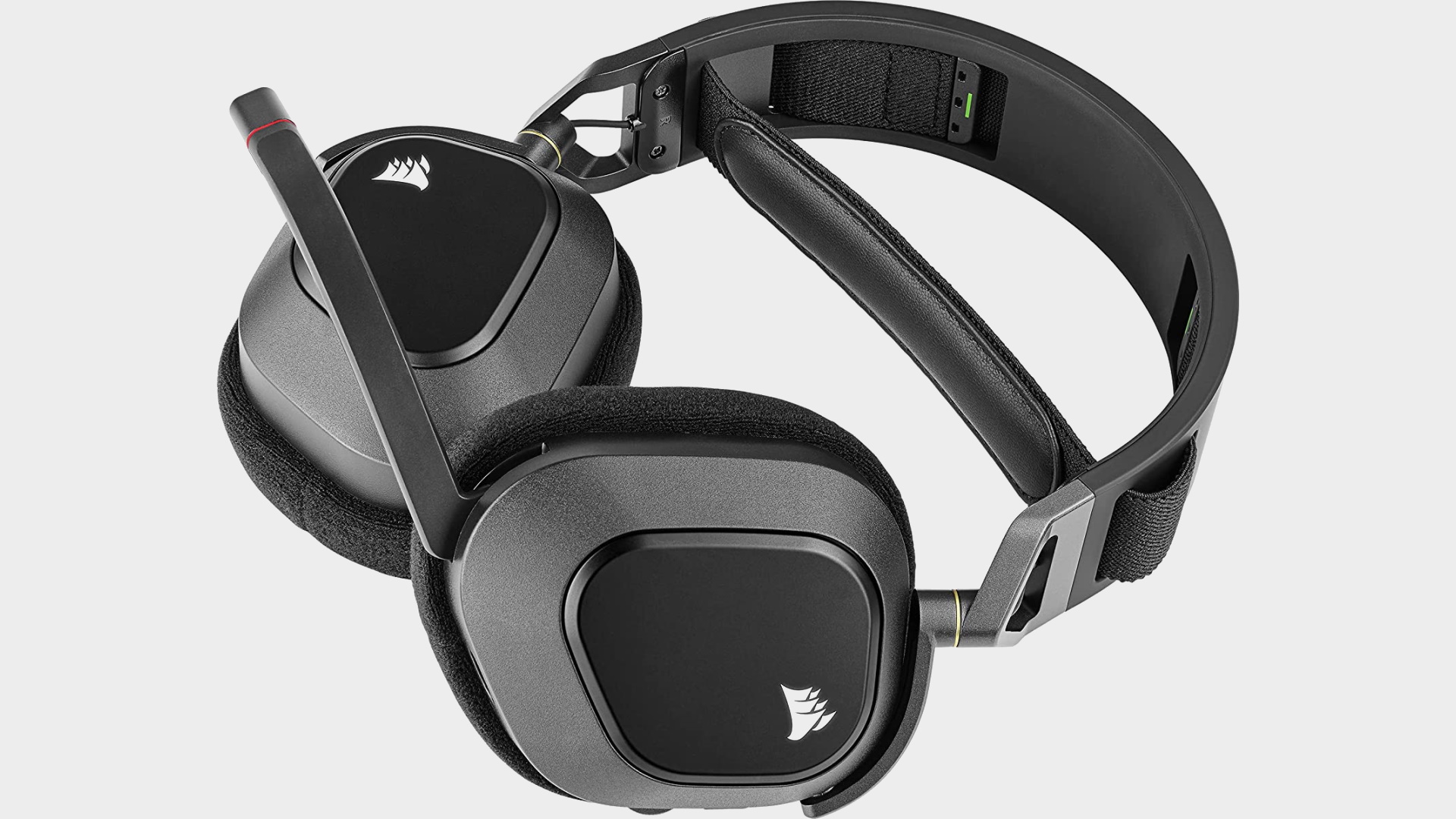
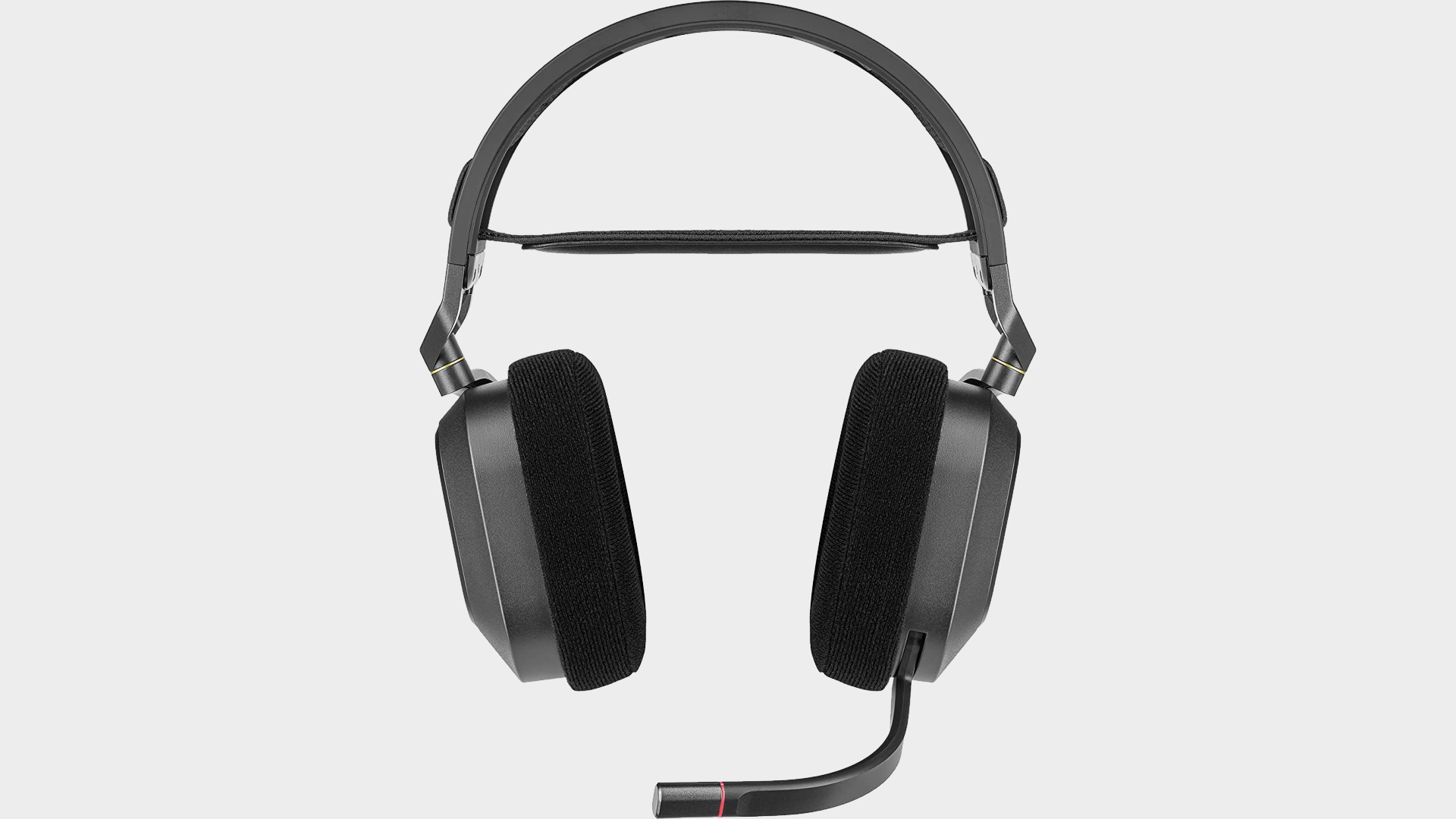
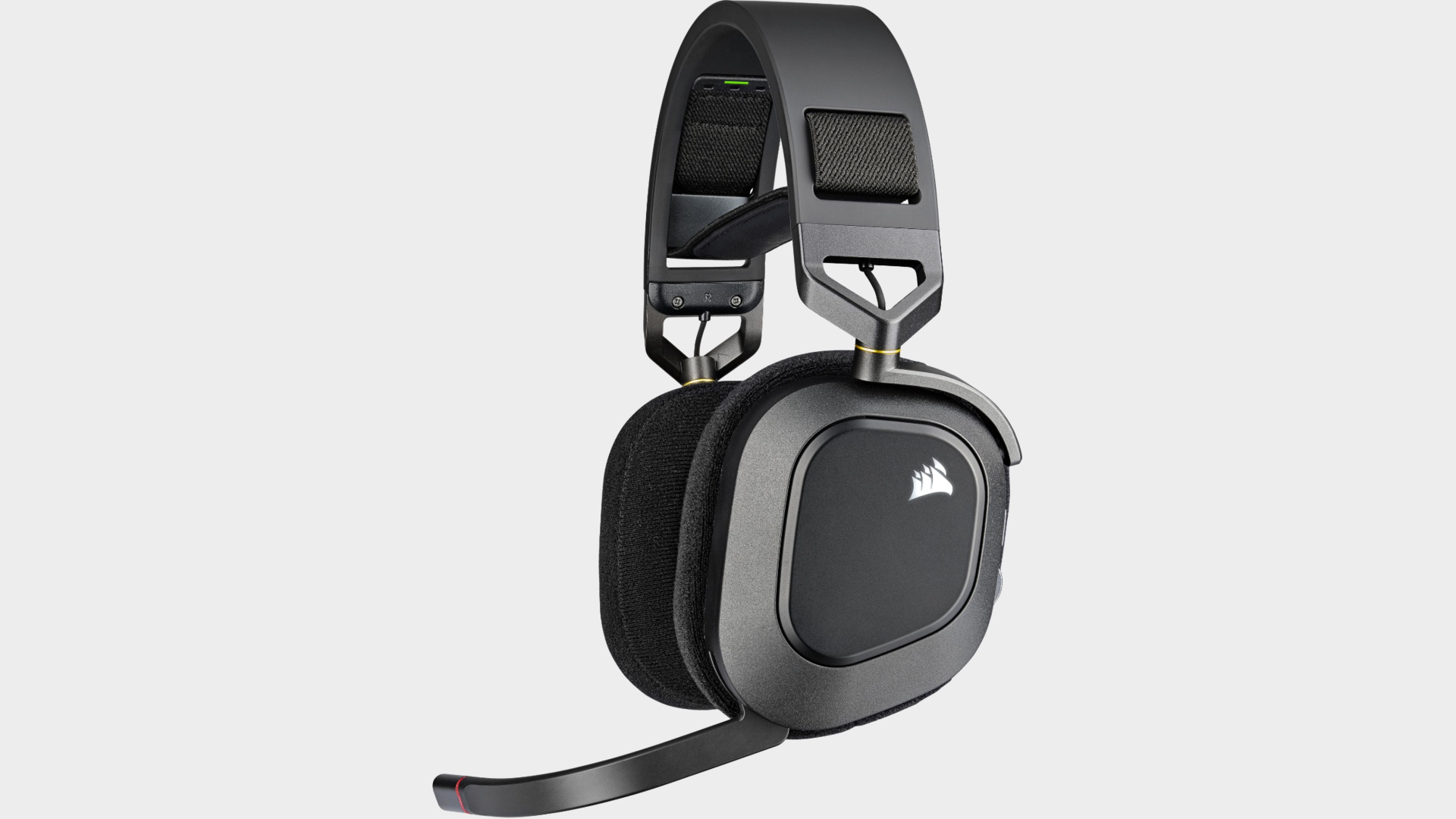
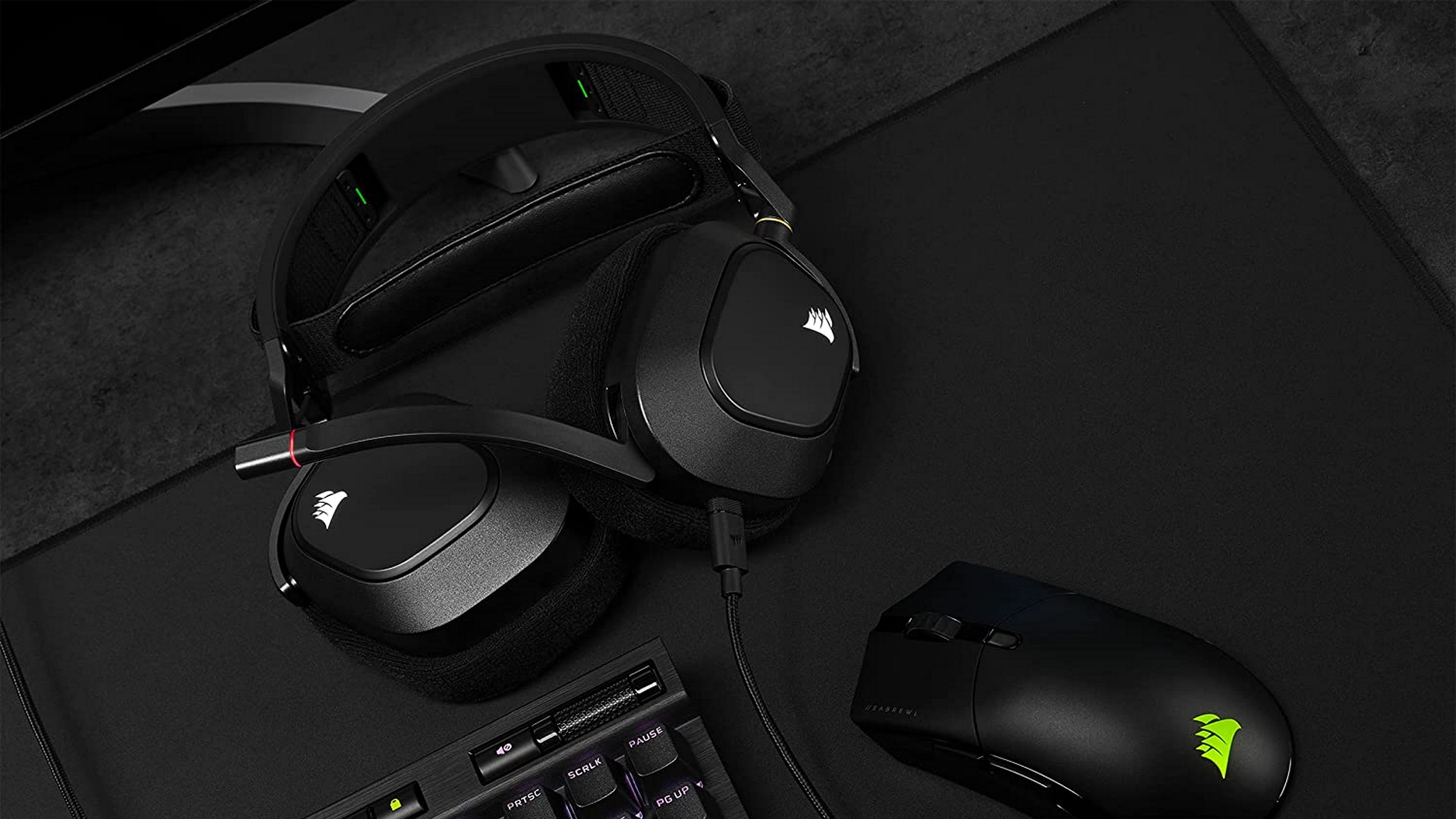
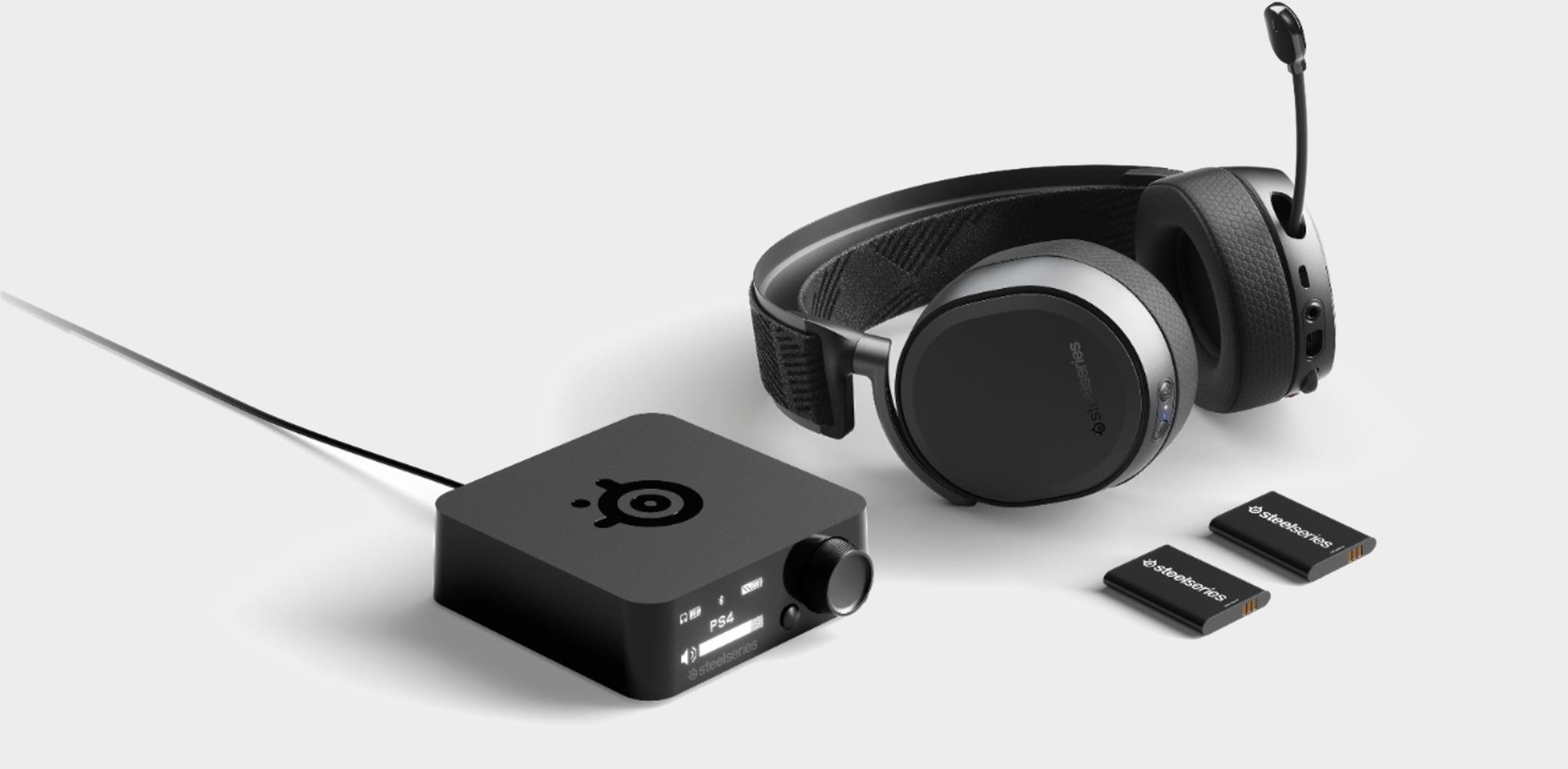
Best wireless gaming mouse: ideal cable-free rodents
Best wireless gaming keyboard: no wires, no worries
Best wireless gaming headset: top untethered audio
Corsair's new HS80 RGB Wireless Gaming Headset is easily one of the best headsets the company has ever made and also one of the best wireless headsets around. It takes some of the best headset features available and executes them really well. At $150, it boasts the latest and greatest lag-free Slipstream Wireless tech, high fidelity audio, and Dolby Atmos. The microphone is outstanding and the new design lets you wear them for ages without fatigue.
It's said that imitation is the highest form of flattery and the new HS80 imitates some of the best headsets from Steelseries. Corsair has finally adopted the same floating headband design that uses an adjustable strap to evenly distribute the weight across your noggin. Furthermore, the HS80 feels bulkier on my head than any Steelseries headset but at 370g, it's not much heavier.
The HS80's sound fantastic with rich, full-body sound with well-balanced bass. The sub-bass can be a little lacking at times and I noticed some distortion even at low volumes. This holds the HS80 back from true greatness but there's an EQ in iCUE that you can play with to fine-tune the audio to your liking.
However, it's the spatial audio where the HS80 surprises, with impressive 3D audio and accurate positioning. This, as you can imagine, is great for games like first-person shooters or large open-world environments. This is made even better with support for Dolby Atmos and Corsair provides an automatic license with the headset. I've been playing a lot of Halo Infinite which supports Dolby Atmos and it has sounded amazing on these cans.
Battery life on the HS80 was consistent with the marketing claims of 20 hours. For me, this meant charging the headset every two days—with 10 hours of work and play each day. I didn't test to see if turning off the RGB lighting made a significant difference but given how small the lights are, I doubt it. Charging the HS80 is easy thanks to a Type-C connection that also allows you to listen to them while it charges.
The Corsair HS80 is a great headset. It sounds great in both games and other media with a wonderful implementation of Dolby Atmos. If you do a lot of chat, the microphone is one of the best we've tested.
Read our full Corsair HS80 RGB review.
Best gaming headset FAQ
What does a gaming headset need?
There are a few things to consider when choosing a gaming headset. A good price and sound quality are foremost, but comfort is up there, too. Also, noise-cancelling mics are crucial for coms, so most of the headsets we’ve listed here include this feature. You want decent voice quality and a microphone that won’t pick up every single keypress on your mechanical keyboard.
How do we test gaming headsets?
Each headset that we test we use daily for at least a week. We record a sample of our voice in Audacity and compare it to previous recordings from other models, then head to Discord to get some feedback from our friends on how we’re sounding.
During that week, we aim to test each headset in a number of different game genres—shooters, battle royales, and racing games make for particularly good testing scenarios since the former tends to test the low-end and reveal muddiness and distortion, while PUBG et al are great for positional audio tracking. Finally, good racing sims feature a very particular mix designed to help you hear brake lock-up and tires losing traction. It’s often in Project CARS 2 (seriously!) where great headsets are separated from merely good. Oh, and we listen to a lot of music, obviously.
Are wired or wireless headsets better for gaming?
This really comes to down to preference, but if you’re going the wireless route what you want to look for is for decent battery life (20 hours or higher). The last thing you want to have a headset that’s constantly needing to be plugged in because the battery life is bad. It kind of defeats the purpose of being wireless. For wired headsets you want to make sure you the cable is long enough to reach your PC without feeling like it’s tugging on your head.
- "
- 100
- 11
- 2022
- 3d
- 7
- 84
- About
- Absolute
- accurate
- across
- adjustments
- All
- alternative
- Amazon
- among
- app
- around
- audio
- auto
- automatic
- available
- Bank
- Batteries
- battery
- Battle
- benefits
- BEST
- Better
- Biggest
- Bill
- Bit
- bluetooth
- Box
- build
- buy
- cable
- cars
- case
- Cash
- charge
- charges
- charging
- chief
- choice
- claims
- closed
- Cloud
- company
- Competitive
- Connectivity
- could
- credit
- Crystal
- customer
- day
- Deals
- debate
- deliver
- Design
- despite
- different
- discord
- Distribute
- Doom
- down
- driver
- easy-to-use
- editor
- Excel
- expensive
- experience
- fatigue
- Feature
- Features
- feedback
- fidelity
- Finally
- fine
- First
- Fix
- Focus
- form
- full
- fun
- future
- game
- Games
- Gaming
- given
- good
- goods
- graphics
- great
- guide
- having
- head
- Headset
- help
- here
- hidden
- High
- High Fidelity
- higher
- How
- HTTPS
- huge
- i
- ICON
- image
- Impact
- implementation
- important
- isolation
- IT
- Job
- keeping
- Keyboard
- knowledge
- Kraken
- large
- latest
- License
- light
- Line
- List
- Listening
- Long
- love
- machine
- MAKES
- Market
- Marketing
- materials
- Media
- models
- money
- more
- Movies
- Music
- Noise
- offer
- offering
- Offers
- Onward
- open
- opens
- Option
- Other
- own
- PC
- PCs
- performance
- play
- Playing
- playing games
- Plugged
- Point
- ports
- powerful
- press
- price
- Pro
- Produce
- Product
- Profile
- project
- provides
- pubg
- purpose
- quality
- racing
- range
- Razer
- RE
- reach
- recommend
- record
- response
- REST
- right
- Ring
- Route
- running
- s
- safe
- Said
- set
- Shadow
- significant
- Simple
- sims
- small
- So
- Software
- Spatial
- Specs
- spend
- Spot
- Stage
- started
- superior
- support
- Supports
- sweet
- talking
- Team
- tech
- test
- Testing
- The
- Through
- time
- tires
- Titanium
- together
- top
- Tracking
- tremendous
- Ultra
- usb
- value
- version
- Virtual
- Voice
- volume
- vr
- week
- What
- Whisper
- WHO
- Wire
- wireless
- within
- words
- Work
- worth
- X
